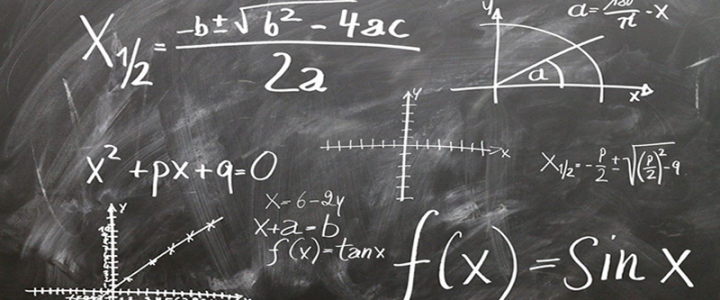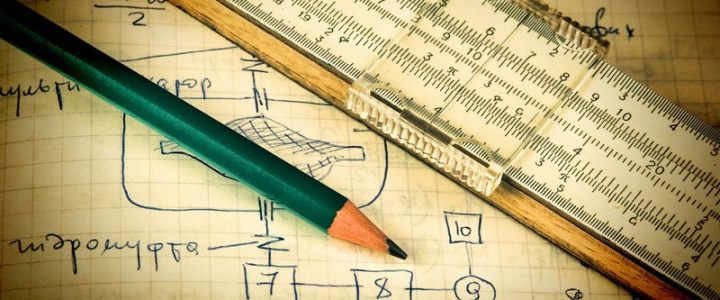| 1 YEAR | 2 semester | 9 CFU |
| Prof. Paolo Salvatore | 2019-20 |
| SALVATORE PAOLO – LHOTKA CHRISTOPH HEINRICH |
2020-21 |
| Francesca Tovena – tovena@mat.uniroma2.it Andrea Santi |
2021-22 |
|
Andrea Santi (6) |
2023-24 |
|
Andrea Santi (6) |
2024-25 |
|
Andrea Santi (6 cfu) – santi@mat.uniroma2.it |
2025-26 |
| Code: 8037949 SSD: MAT/03 |
LEARNING OUTCOMES
The course aims to provide an introduction to linear algebra and Euclidean analytical geometry.
KNOWLEDGE AND UNDERSTANDING: At the end of the course, the student is supposed to know the notions of vector space, linear combination, generated vector subspace, linear dependence and independence, basis, solution of a linear system, matrices and their rank, linear applications, kernel and image, diagonalisation of linear applications and quadratic forms, geometric subspaces and their position, conics and their classification criteria.
APPLYING KNOWLEDGE AND UNDERSTANDING:
At the end of the course, the student is supposed to be able to determine the rank of a matrix, to discuss the solvability and to solve linear systems with a finite number of indeterminates, to determine the dimension and a basis of subspaces of numerical spaces or geometric vectors, to apply the Gauss method of reduction, to represent linear applications between vector spaces of finite dimension and to determine their kernel and image, to discuss the diagonalisation of square matrices and to diagonalise them, to represent linear geometric subspaces and their intersections/subspaces in parametric and Cartesian form, to classify plane conics, to represent and classify quadratic forms, to apply the notions of linear algebra to the study of geometric situations and vice versa.
MAKING JUDGEMENTS: The student will be able to discuss and verify the correctness of reasoning involving the studied notions of linear algebra and Euclidean analytic geometry. The student will also be able to apply linear algebra in solving problems in affine and Euclidean geometry.
COMMUNICATION SKILLS: The student will be able to explain and discuss the solution of problems; he/she will also be able to discuss and correctly reproduce definitions and demonstrations of results related to vector spaces, affine and Euclidean spaces.
LEARNING SKILLS: The student will be able to read and learn by himself more advanced topics of linear algebra related to solving linear systems and matrix decompositions useful for numerical applications.
Syllabus – Linear Algebra and Geometry
Part I – Linear Algebra
-
Vector Spaces and Subspaces
-
Vector spaces and subspaces.
-
Linear dependence and independence.
-
Steinitz’s theorem.
-
Bases and dimensions.
-
Sum and intersection of vector subspaces.
-
Grassmann formula.
-
-
Linear Applications
-
Linear applications.
-
Image, kernel and rank of a linear application.
-
The group of automorphisms of a vector space.
-
-
Matrices and Rank
-
Matrices and rank of a matrix.
-
Gauss method for calculating the rank.
-
-
Linear Systems
-
Linear systems.
-
Compatible systems.
-
Rouche–Capelli theorem.
-
First and second uniqueness theorems.
-
Parameter dependent systems.
-
Solving a linear system with Gauss elimination.
-
Reduced systems.
-
-
Matrices and Linear Applications
-
Relation between matrices and linear applications.
-
Invertible matrices.
-
Orthogonal matrices.
-
Change of basis.
-
-
Determinants
-
Definition, calculation methods, and applications.
-
Binet’s theorem.
-
Kronecker’s theorem.
-
Cramer’s theorem.
-
-
Complex Numbers
-
Diagonalization and Orthogonality
-
Diagonalization of matrices.
-
Positive definite scalar products.
-
Gram–Schmidt orthogonalization algorithm.
-
Spectral theorem.
-
Part II – Geometry
-
Affine and Euclidean Spaces
-
Dimensions of an affine space.
-
Free and applied vectors.
-
Affine subspaces of a Euclidean space and their positions.
-
Parametric and Cartesian equations of an affine subspace.
-
Dependence and independence of points.
-
Mutual position of affine subspaces.
-
Systems of subspaces: bundles and stars.
-
Affinity.
-
Orientation.
-
-
Euclidean Geometry
-
Orthonormal references.
-
Vector product.
-
Areas and volumes.
-
-
Conics
-
Metric classification of conic curves.
-
Note
-
The exercises performed are considered an integral part of the program.

 UNIVERSITA' DEGLI STUDI ROMA "TOR VERGATA"
UNIVERSITA' DEGLI STUDI ROMA "TOR VERGATA"



